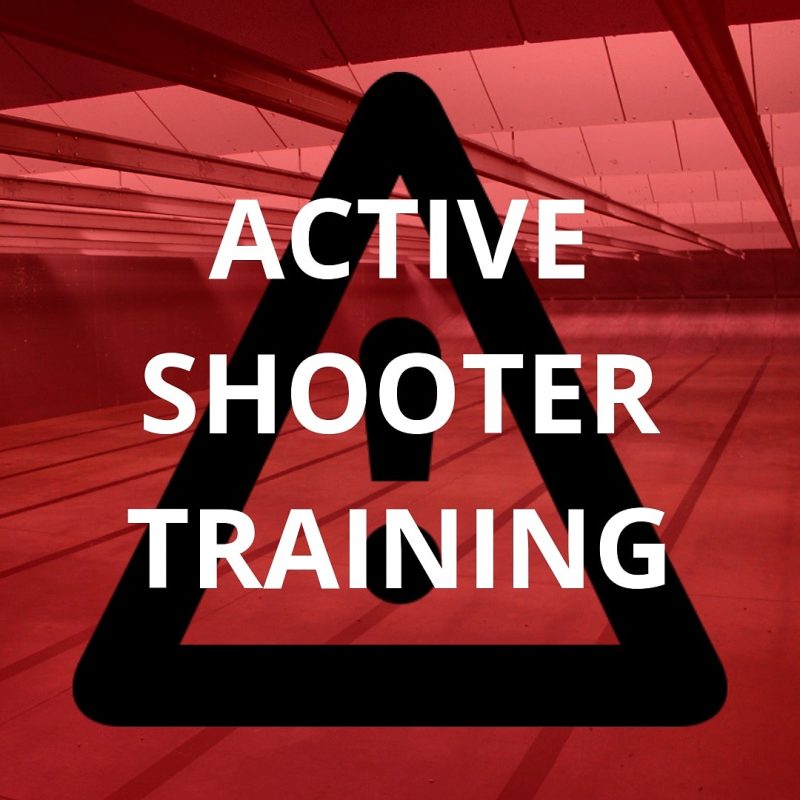Carrying Out Active Shooter Training: Ideal Practices for Developing a Safe and Prepared Neighborhood Setting
As communities confront the unsettling reality of energetic shooter occurrences, the application of extensive training programs becomes crucial. What are the essential components that can transform a standard training program into a robust model for neighborhood durability?

Comprehending the Need for Educating
In an era noted by increasing cases of violence in public areas, understanding the requirement for energetic shooter training has never ever been much more essential. The occurrence of mass capturings across different environmentsâEUR" such as institutions, offices, and shopping centersâEUR" highlights the urgency for individuals and companies to be prepared for such emergency situations. Energetic shooter circumstances can unravel rapidly, leaving little time for individuals to respond efficiently. For that reason, extensive training efforts can outfit participants with the understanding and skills to respond decisively.
Training fosters a sense of empowerment and readiness, making it possible for people to feel more safe and secure in their environments. The benefits of energetic shooter training prolong beyond prompt feedback; they include boosting interaction protocols and enhancing overall safety and security procedures within organizations.
Key Elements of Effective Programs
Efficient active shooter training programs include a number of key parts that improve preparedness and action capabilities. Detailed curriculum advancement is essential, making certain that training material is pertinent, evidence-based, and tailored to the certain needs of the company or area. This includes recognizing the dynamics of active shooter cases and the mental influence on individuals entailed.
2nd, realistic training situations ought to be employed to simulate possible situations, allowing individuals to exercise decision-making and feedback methods in a regulated setting. These drills promote muscle memory and build self-confidence amongst individuals.
Third, a focus on communication protocols is essential. Establishing clear lines of interaction amongst legislation enforcement, emergency -responders, and participants makes certain coordinated reactions during an occurrence. Routine updates and correspondence course help keep communication pathways clear and reliable.
4th, recurring evaluation and feedback mechanisms ought to be incorporated into the training program - active shooter training. Assessing the effectiveness of training with participant comments and performance metrics permits continual renovation
Lastly, promoting a society of security and readiness within the community encourages vigilance and aggressive procedures, ensuring that individuals are not only qualified but additionally taken part in preserving a safe and secure atmosphere.
Engaging Area Stakeholders

To successfully involve these stakeholders, it is important to connect the objectives and benefits of the training. Holding educational sessions can aid clear up the training's purpose, address problems, and describe the duties each stakeholder may play. Producing a stakeholder consultatory board can facilitate ongoing dialogue, permitting for varied point of views and understandings to be incorporated right into the training program.
Structure connections with community leaders and organizations is additionally essential. Their assistance can boost outreach initiatives, increase involvement, and make sure that training is customized to the unique needs have a peek at this site of the neighborhood. In addition, stakeholders can aid in disseminating details article and sources, reinforcing the message of safety and readiness.
Inevitably, involving community stakeholders not just reinforces the training effort however also cultivates a feeling of ownership amongst citizens, bring about a more resilient and informed community efficient in responding successfully to possible threats.
Training Distribution Approaches
Making use of a selection of training distribution techniques is necessary to fit the diverse understanding styles and needs More hints of individuals in energetic shooter training programs (active shooter training). Efficient training can take several kinds, consisting of lectures, hands-on simulations, on-line components, and interactive workshops. Each method offers an one-of-a-kind function and can improve the overall understanding experience

On-line components supply adaptability and access, making it possible for individuals to discover at their own speed. These can consist of videos, quizzes, and discussions to assess understanding. Interactive workshops encourage team conversations and problem-solving, promoting team effort and interaction abilities.
Integrating a mixed strategy that combines these techniques not only enhances the training experience but additionally makes sure that individuals are better prepared to respond effectively in case of an energetic shooter scenario (active shooter training). By attending to numerous discovering preferences, organizations can produce a much more educated and receptive neighborhood
Continual Examination and Enhancement
Routine evaluation and enhancement of active shooter training programs are vital to keeping their significance and efficiency. As dangers advance, so have to the strategies and methodologies employed in training. Continuous assessment makes sure that training material reflects the current knowledge on energetic shooter events, incorporating lessons discovered from recent events and adjusting for arising patterns.
To facilitate this procedure, organizations ought to establish comments mechanisms that include individual assessments, specialist testimonials, and occurrence debriefs. Gathering data on individual performance during drills and workouts is essential, as it highlights areas requiring renovation and informs future training sessions. Furthermore, involving with police and emergency situation responders can supply valuable insights into the usefulness and applicability of training procedures.
Routinely set up testimonials of training materials and techniques must be mandated, promoting an environment of technology and versatility. Organizations needs to also urge a culture of recurring knowing, where personnel participants feel encouraged to suggest modifications based on their experiences. By dedicating to continual evaluation and renovation, organizations not only boost the efficiency of their energetic shooter training programs but likewise reinforce their general dedication to safety and readiness within the area.
Conclusion
In conclusion, effective implementation of active shooter training necessitates an extensive method that prioritizes neighborhood interaction and sensible simulations. Eventually, a commitment to continuous training and enhancement cultivates a culture of vigilance and readiness, making certain a safer environment for all neighborhood participants.